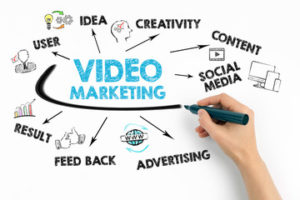
To find the best way to grab the attention of your audience, go for a single-page website. This means that all the information your visitor might want to receive is on the same page. Single-page websites can influence more than the visual appearance of your website. Before deciding to create a page on your site, it is important to understand what type of site will fight for your business. Single page web designs are one of the most notable web trends, which has grown in importance with the boom in mobile and social media browsing. Single page websites contain only one HTML page with content, videos and images. To help you, I have compiled a list of the pros and cons.
Pros of single-page web design:
Mobile-Friendly:
The single-page web design is responsive and optimized for visitors accessing the web page through mobiles. User experience gets enhanced when there is only one page to view. Think about one of the social media platforms you use on your mobile, where you scroll down a single page to view the content. A single-page site is the same! Don’t worry about moving from page to page. Everything is in one place so you can see the content.
Fast and Responsive
Single-page websites can be easily updated since only the content needs to be changed. This improves the speed of the website. Most resources (HTML / CSS / Scripts) are loaded only once during the lifetime of the website. That’s a big advantage. If a page takes more than 200 milliseconds to load, it can harm business and sales.
User Experience
The power of simplicity plays a big role on single page websites. Many single-page sites usually have a menu at the top of the page so users can easily jump directly to the part of the page they want to see. A single-page site will quickly deliver messages and ‘calls to action’ to users. They are easy to find, read, consume, and make quick decisions because the content is engaging and eye-catching. They don’t have to search far to find a contact form or buttons to their social networks, because they’re all in one place.
Cons of the single-page website:
Takes more time for loading:
When the images, graphics, multimedia, etc. are all presented on a single page. It would take longer to load. The increased load time can affect Google rankings and cause inconvenience to the user, who may leave if the website is not loading at the expected speed.
Lack of individual content:
It is difficult to find specific content on a single page website. It should display everything on one page. If a visitor needs to know more about a product, idea, or content displayed on the site, it will be difficult for a single page website to display more of the needed content. This lack of relevant content can be frustrating to a visitor who wants to see specific information on the site.
Difficult to analyse:
If a website has multiple pages, it will be easier to leverage data from Google Analytics to draw conclusions about the number of website visitors to each page and to understand the content that users find engaging. In single page sites, it is impossible to understand such information because it loads everything on one page.
Conclusion:
Do you have a one or more page site for your business? The major reason single-page sites don’t have high standards is to compare them with traditional sites. Do not go with such an opinion. Just process a single page site in a different view and do your best to develop the site. Whether your site should be one or more pages, you need to consider your business goals and what you are trying to accomplish with your website. You need to consider your customers and target audience and decide which site will give best them a satisfying web experience. We design and develop websites great and trendy yet professional. Contact us today, share your feedback with us.




